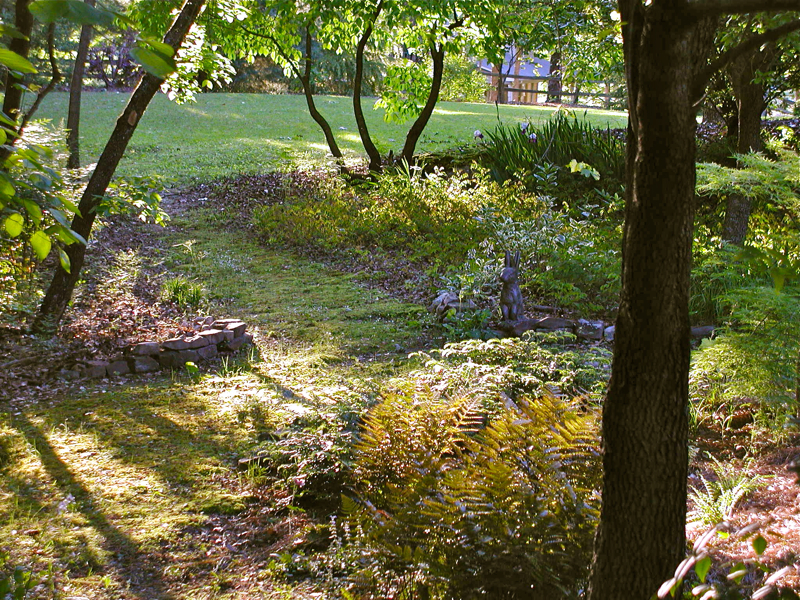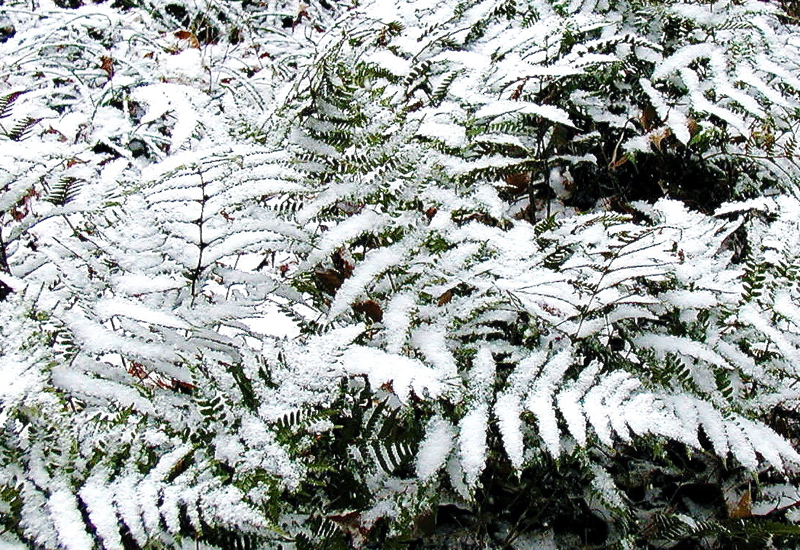Peacock Fern For House and Garden
 Friday, May 22, 2015 at 5:20PM
Friday, May 22, 2015 at 5:20PM I am smitten with my new fern in the woodland garden, though it is not a real fern but a type of club moss. Selaginella uncinata is also called peacock fern and rainbow moss, and it is easy to see why.

 Do you see a resemblance to these peacock feathers?Its texture is so soft I am tempted to pet it; it feels like moss, but its lacy foliage has the look of an exotic fern. The foliage has a shimmery blue-green iridescence, though its intensity depends upon light, moisture levels and temperature. In winter the foliage will take on a bronze cast.
Do you see a resemblance to these peacock feathers?Its texture is so soft I am tempted to pet it; it feels like moss, but its lacy foliage has the look of an exotic fern. The foliage has a shimmery blue-green iridescence, though its intensity depends upon light, moisture levels and temperature. In winter the foliage will take on a bronze cast.
Peacock fern is tougher than its delicate appearance would suggest. It may be grown outside in hardiness zones 7-10. It will usually go dormant for the winter in zone 7 and will be evergreen in zones 8-10. I am on the border between zones 7 and 8, so I will mulch mine well and see if it will remain evergreen for me.
Peacock fern should be planted either in full shade or where it will receive only morning light. It needs rich soil that is well-drained and high in organic matter. Two parts peat moss to one part loam and one part pine bark is a good combination. Mulch the soil around the fern with pine straw or wood chips to conserve moisture and to help prevent weed growth.  Peacock fern needs consistent moisture, but do not overwater the plant or the roots may rot. In winter one should cut back on watering, but do not allow the roots to dry out.
Peacock fern needs consistent moisture, but do not overwater the plant or the roots may rot. In winter one should cut back on watering, but do not allow the roots to dry out.
This wonderful fern is a low-growing spreader up to two feet wide and six inches tall. It makes a good ground cover at the base of shrubs. However, it grows slowly, so for this purpose plant several about two feet apart. Peacock fern can be grown in a pot and looks great in a hanging basket. It also does well as a houseplant or in a terrarium.
If grown outdoors, fertilize in early spring with an organic fertilizer high in nitrogen. If it is grown as a houseplant, water well at least once a week, and from spring to fall fertilize once a week with half-strength water-soluble plant food.
 Peacock fern,
Peacock fern,  club moss,
club moss,  ground covers,
ground covers,  rainbow moss in
rainbow moss in  evergreens,
evergreens,  ferns
ferns 


